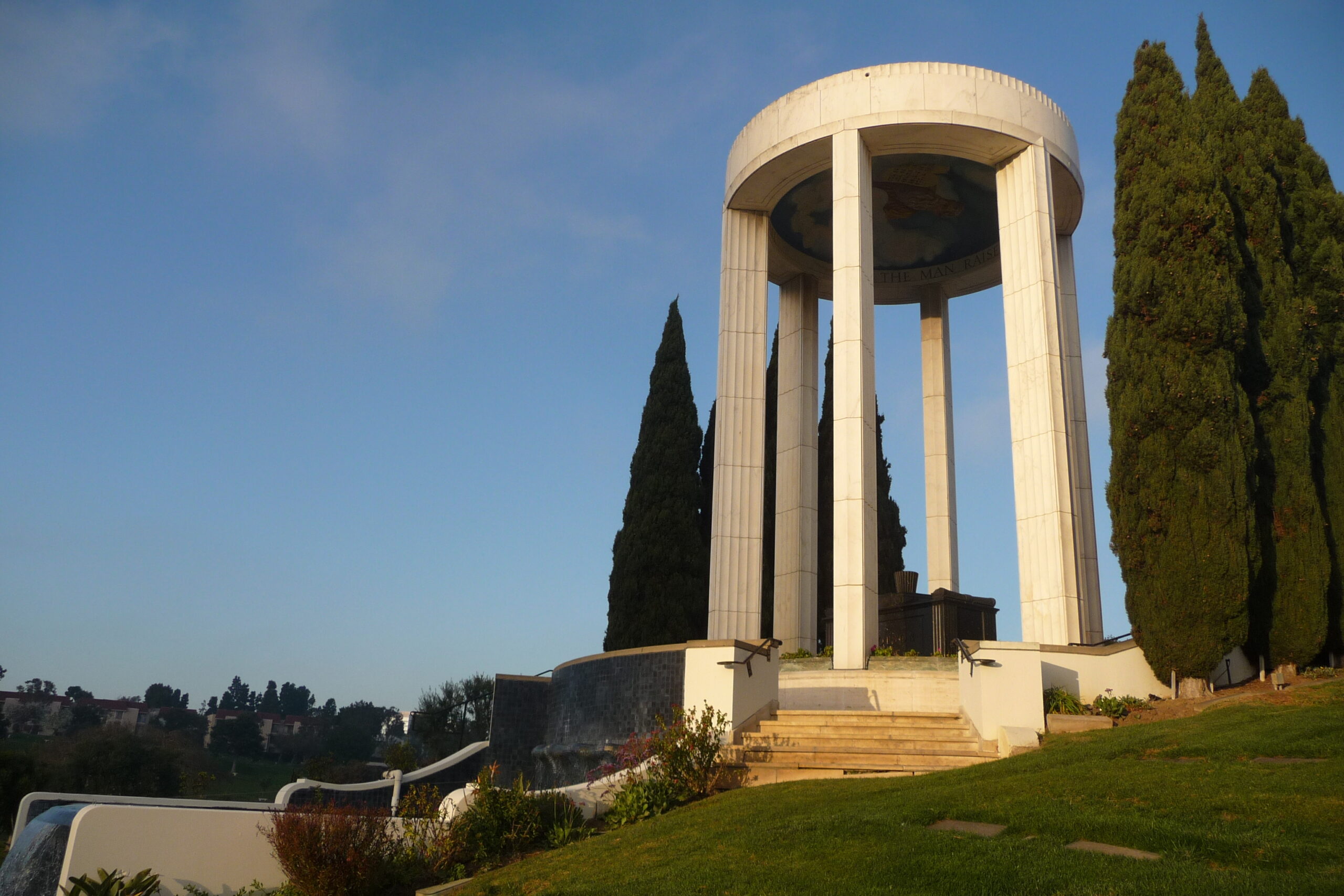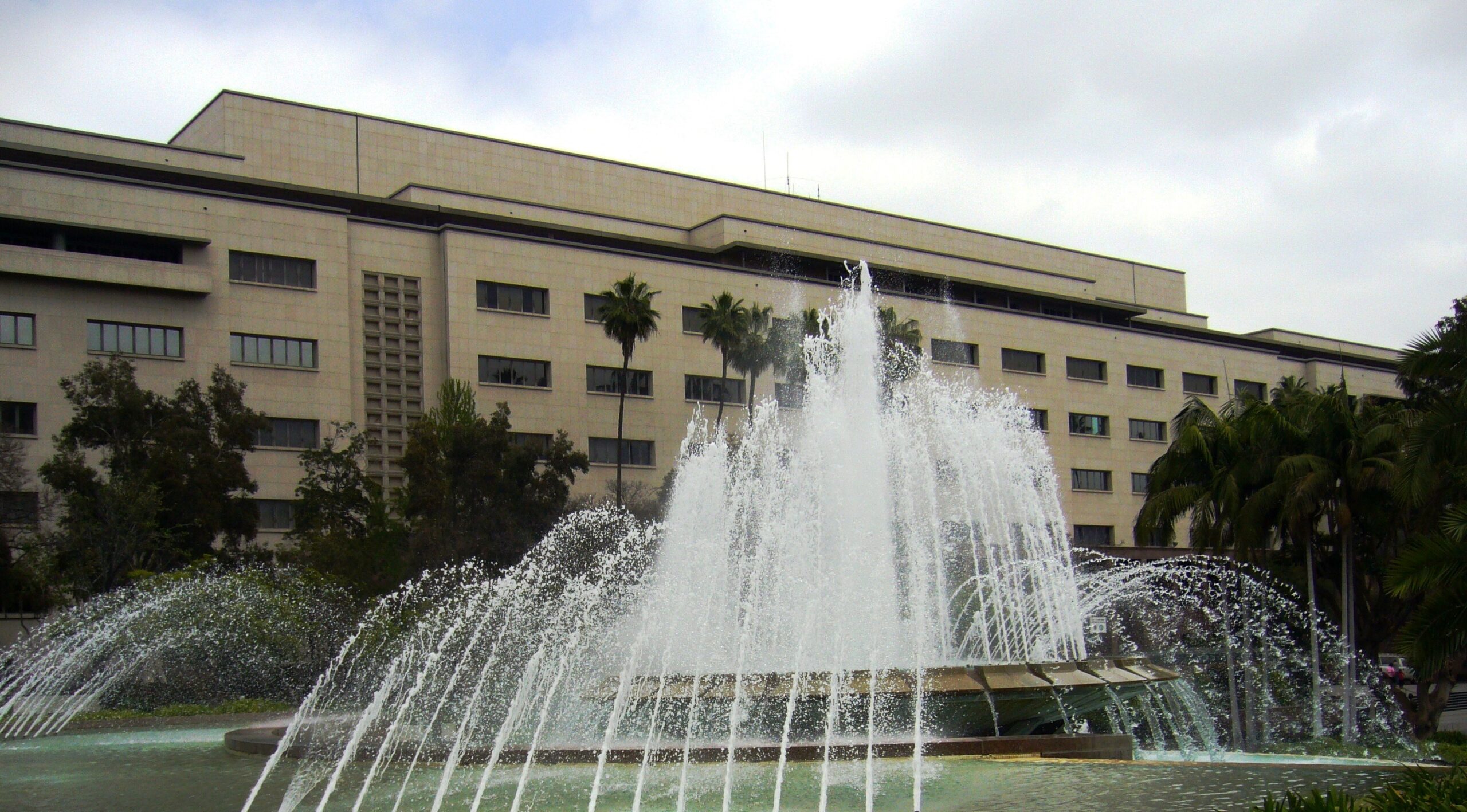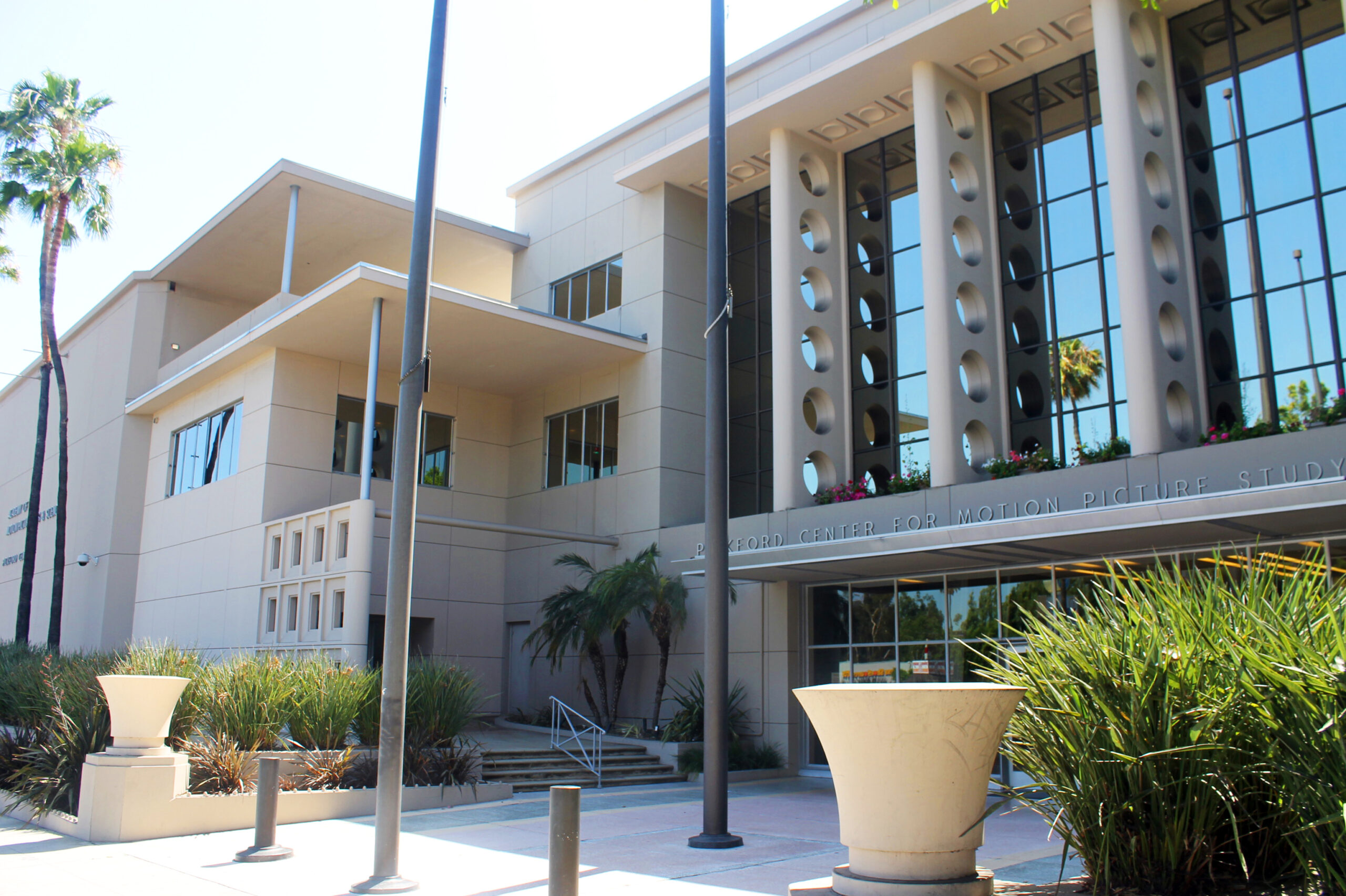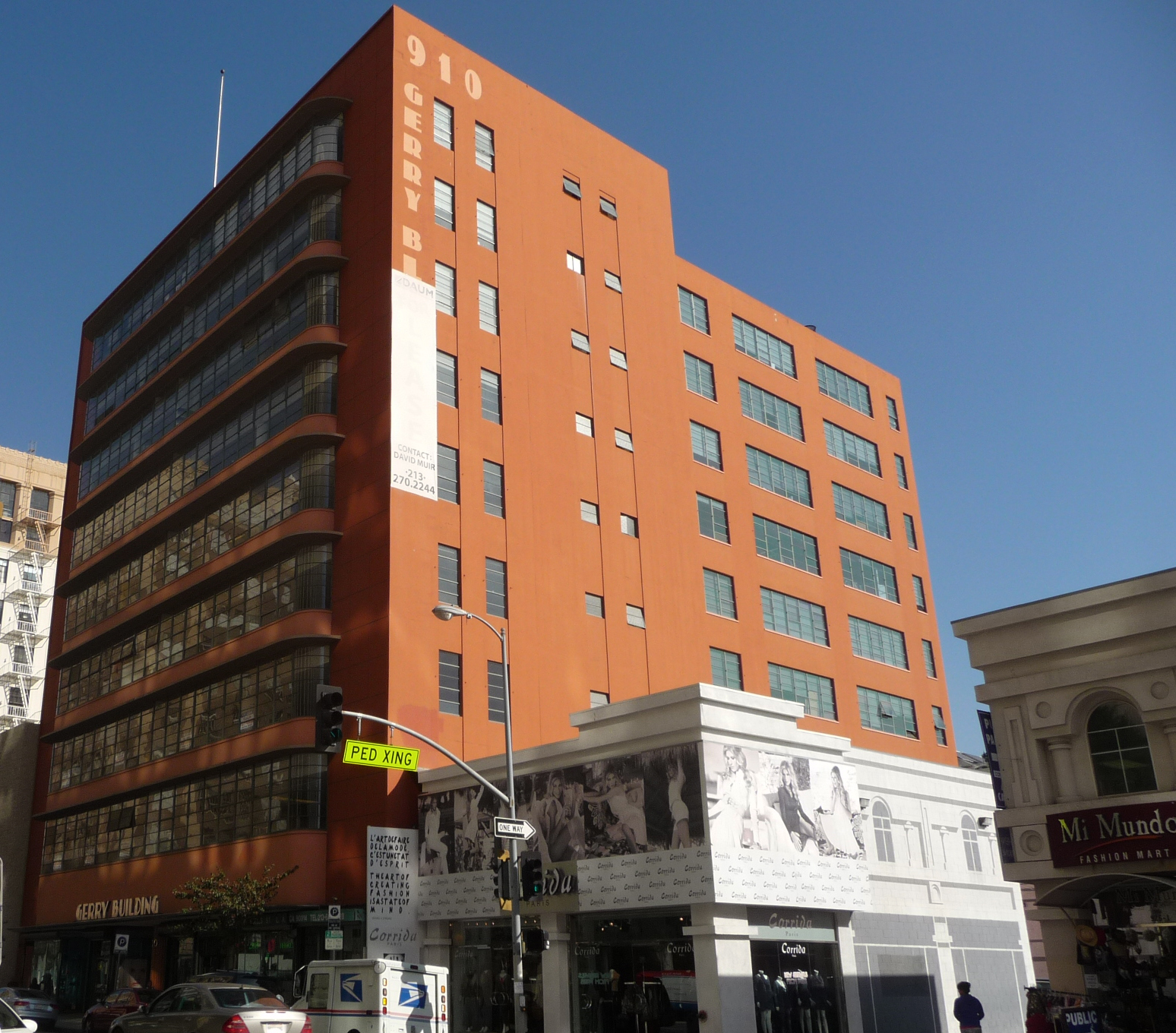
Place
Hillside Memorial Park, Al Jolson Shrine
The cemetery of choice for the Jewish population of L.A. since 1941, boasting a particularly high proportion of "permanent residents" with ties to Hollywood.


Place Details
Address
Get directions
Architect
Year
Style
Community
Hillside Memorial Park has served as the cemetery of choice for the Jewish population of Los Angeles ever since its incorporation in 1941, boasting a particularly high proportion of "permanent residents" with ties to Hollywood. Its rolling landscape of green lawns, low markers, sculpture, and pristine white buildings provides a fitting setting for the final resting place of the local elite. Several of its buildings are particularly notable for their Moderne design, including the administration building and a remarkable building roofed with a Googie-style parabolic arched concrete canopy.
The most prominent structures in the memorial park, the main mausoleum and the Al Jolson Shrine, were designed by celebrated architect Paul R. Williams and completed in 1951. Williams created the designs as a pair, so they enhance and complement one another. The shrine is a Moderne simplification of an open classical temple, a seventy-five-foot-tall marble rotunda with massive marble columns sheltering the ornate sarcophagus of the seminal entertainer. A cascading waterfall flows downhill from the shrine over a series of tiled tiers and ends in a bed of flowers. Williams' two-story mausoleum sits above the shrine at the crest of a hill.
It is Late Moderne in style, with strong, simply flowing exterior lines and a more curving, organic interior. The building has two wings that angle toward each other, meeting in the center at a dramatic round vestibule echoing the rotunda of the shrine. Thanks in large part to Williams' designs, Hillside Memorial Park is a landmark of Modernism as well as a cherished religious site.


